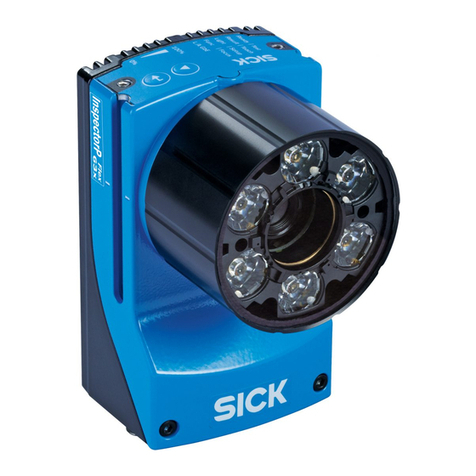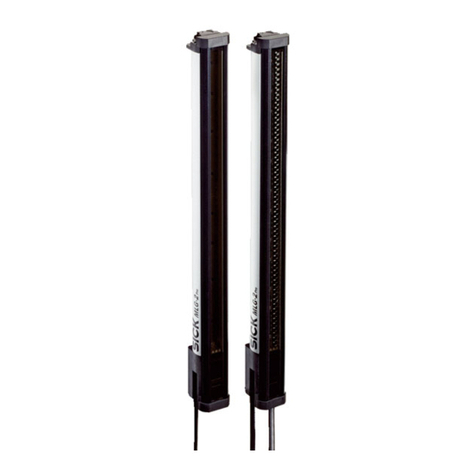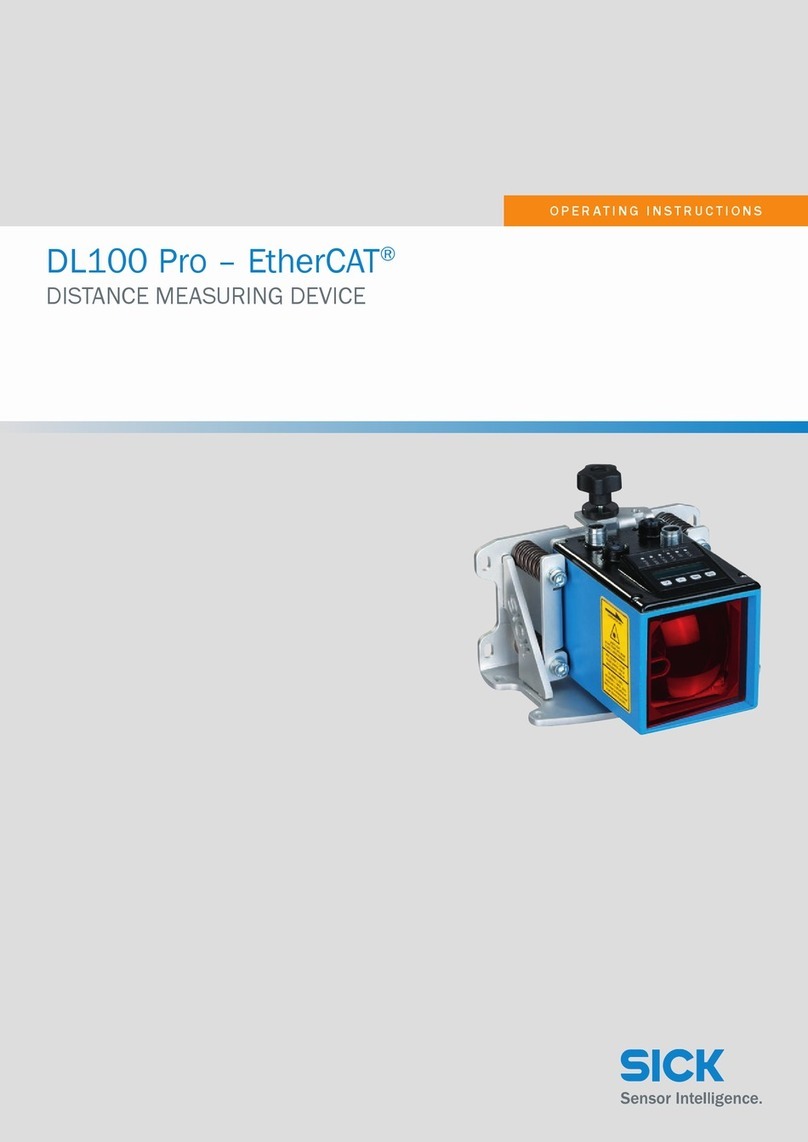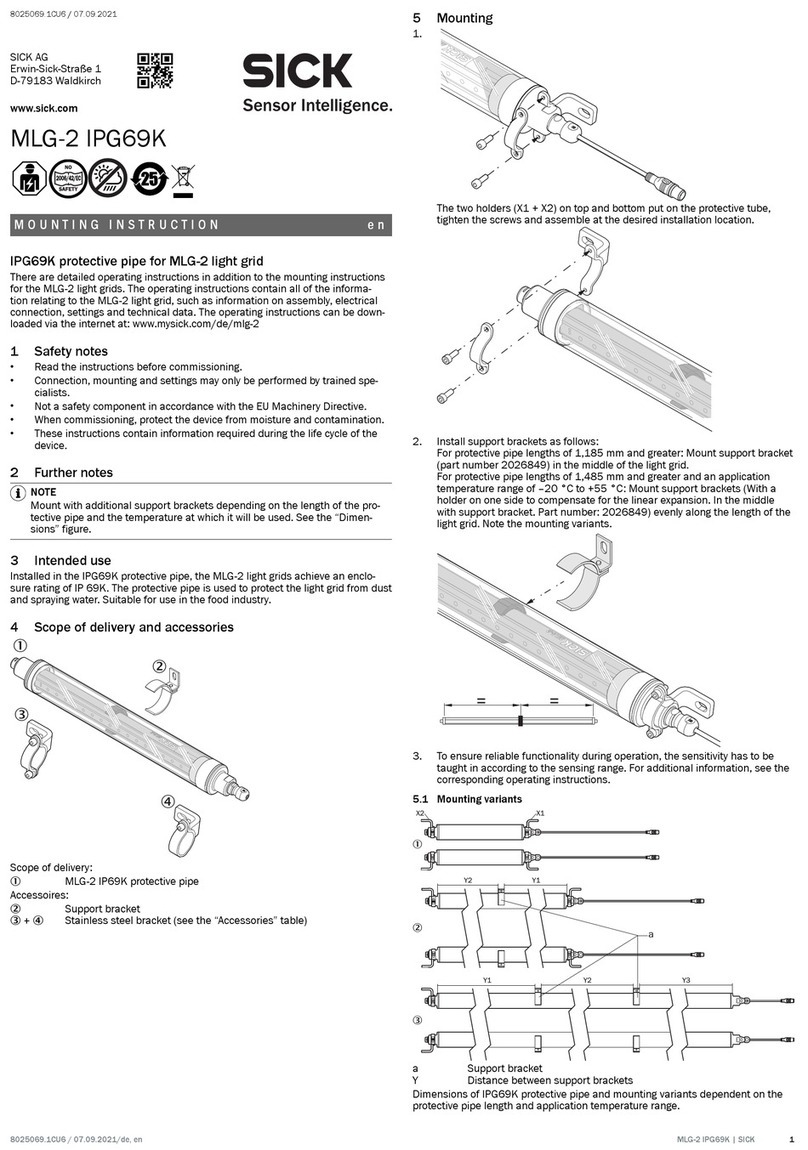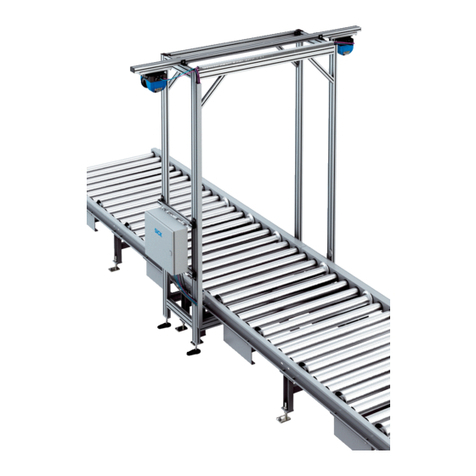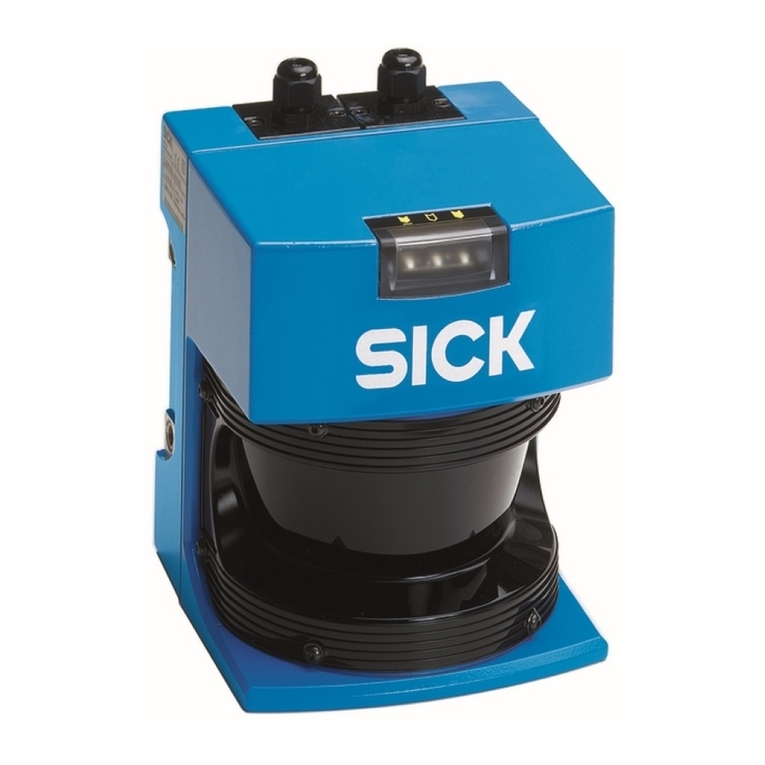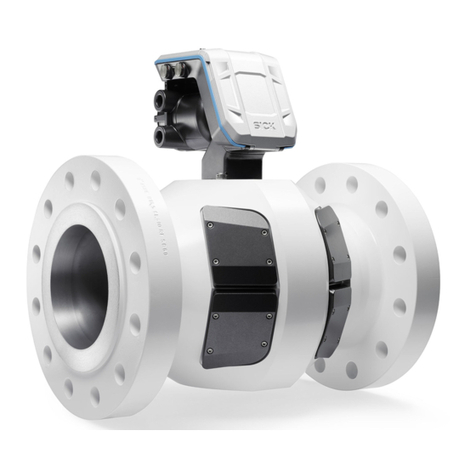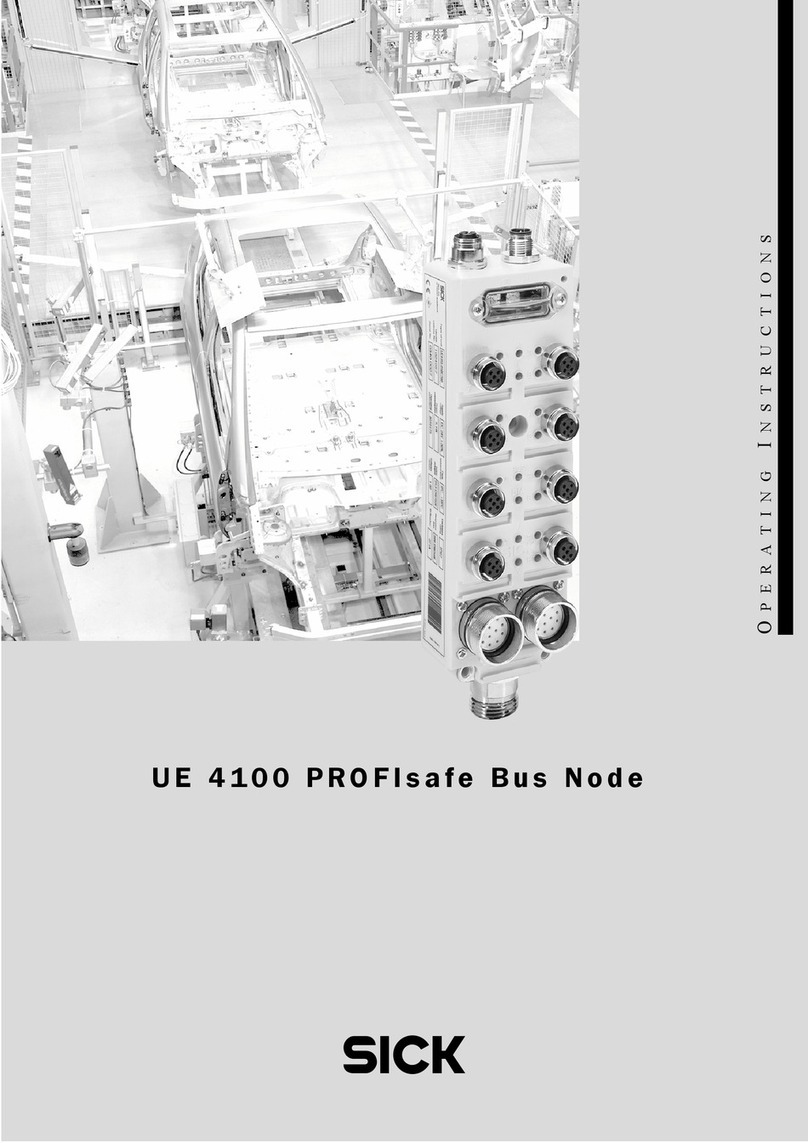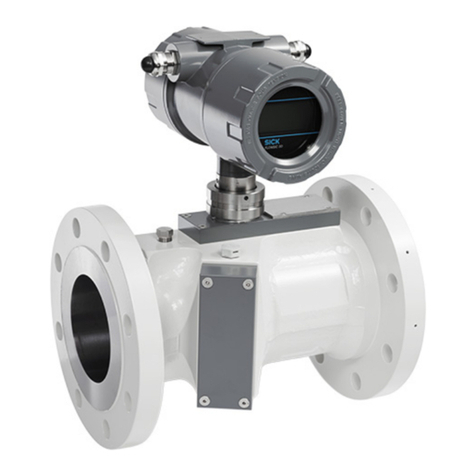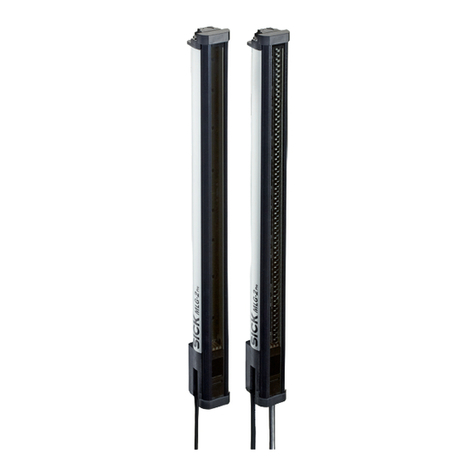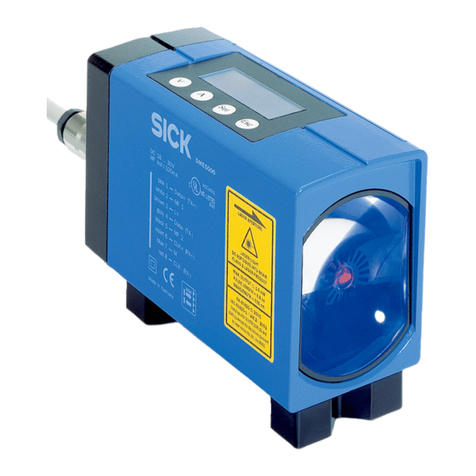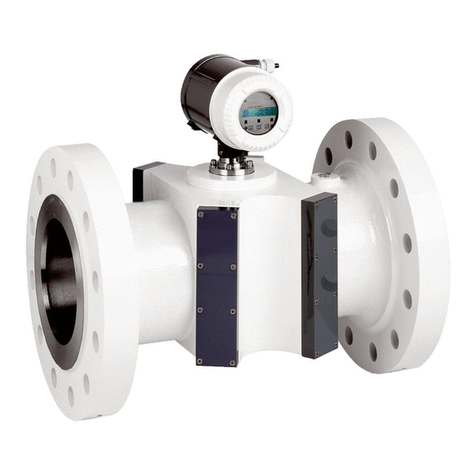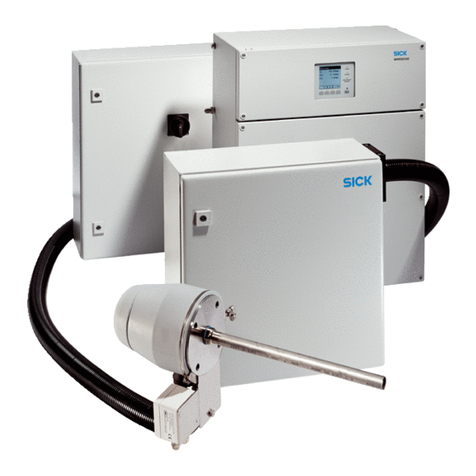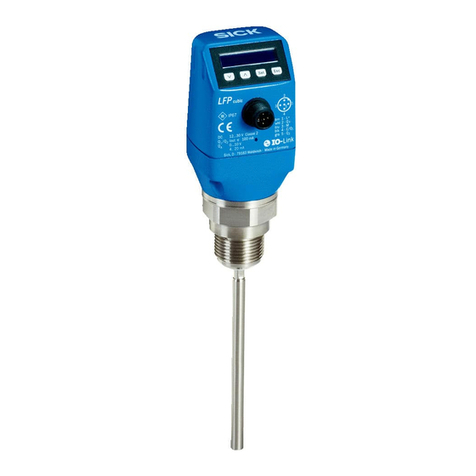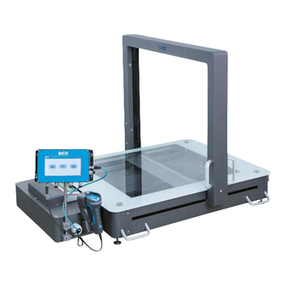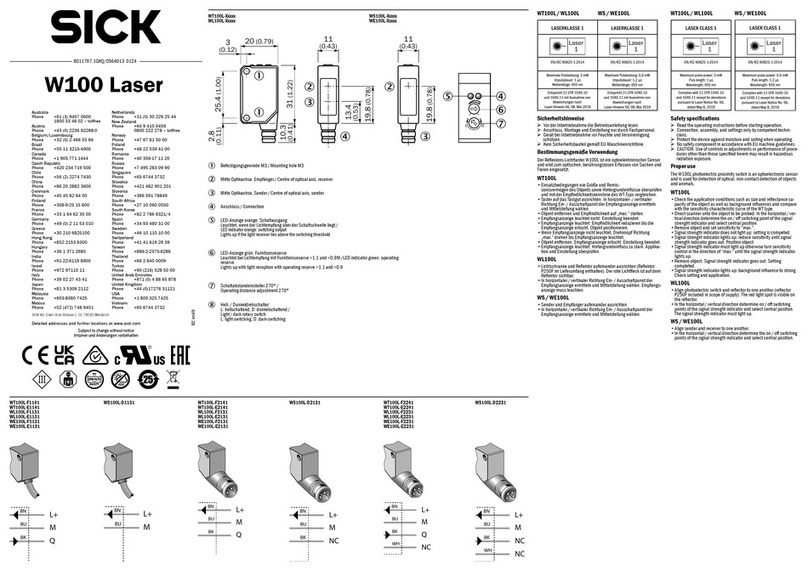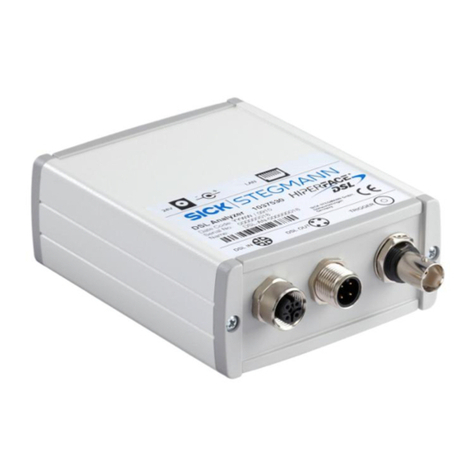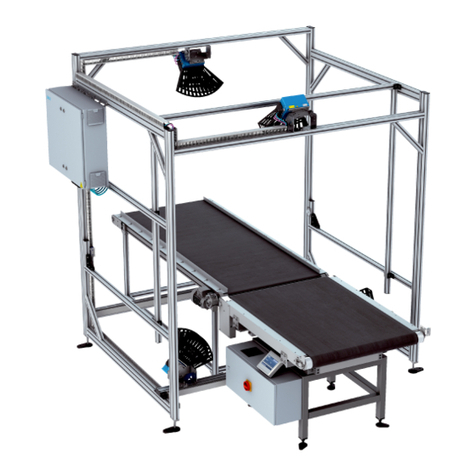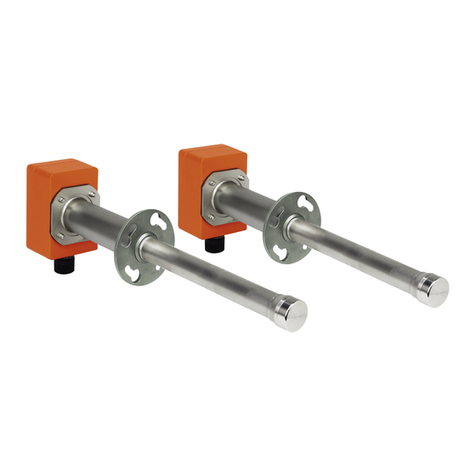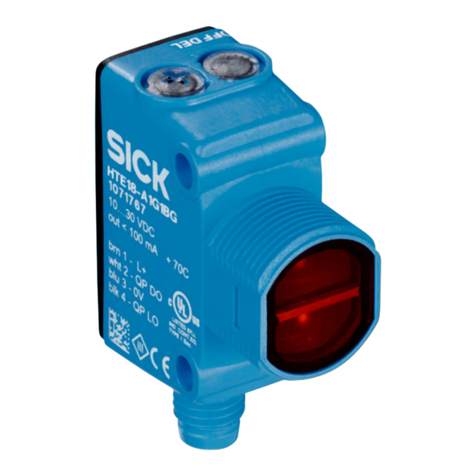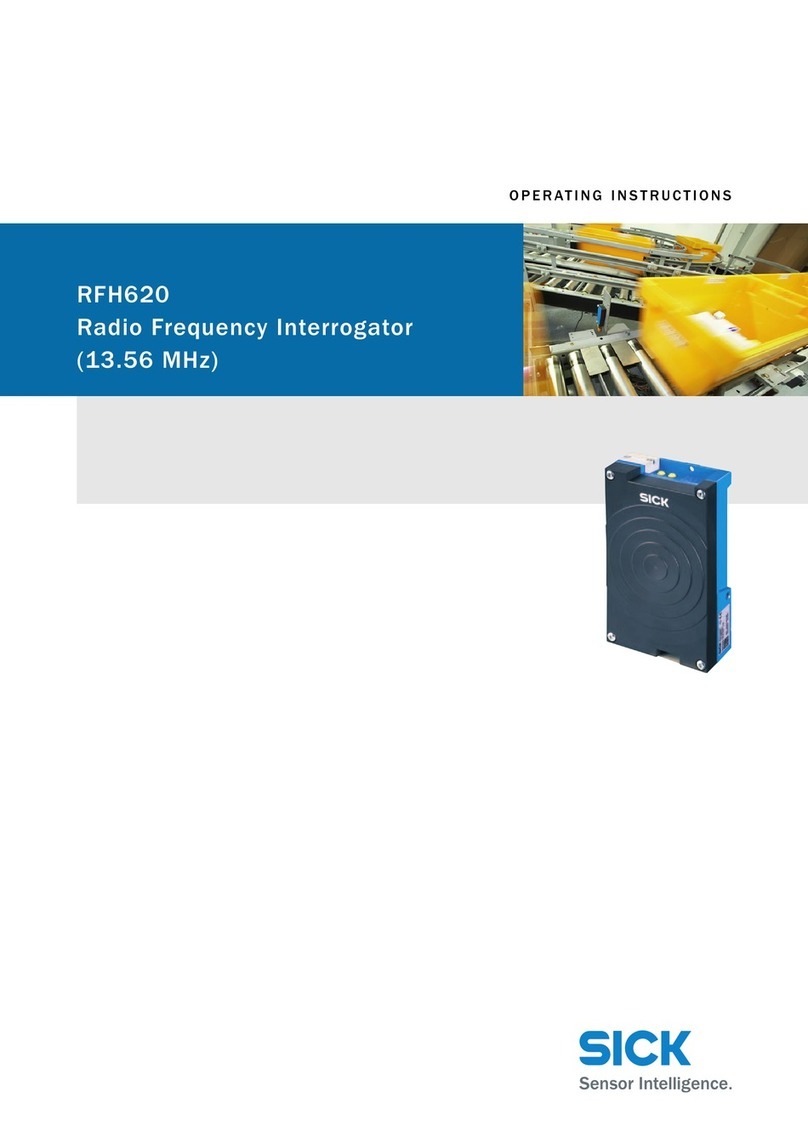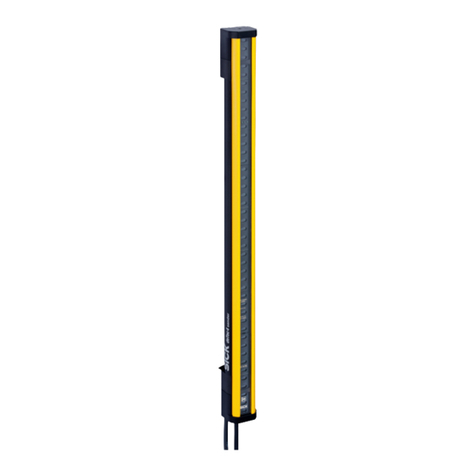
CONTENTS
7
8010100/YK22/V4-0/2015-12 | SICK OPERATING INSTRUCTIONS | GM700
Subject to change without notice
7.5 Controlling and tracking the laser working point during measurement .....63
7.5.0.1 Selecting the ambient temperature range ..............63
7.5.1 Filter box measurement to check the measuring channels for
NH3, HF or HCl ..............................................................................63
7.5.2 Determining the necessary test gas concentration ....................65
7.5.3 Installing the filter box..................................................................65
7.5.4 Carry out filter box measurement ................................................66
7.6 Checking the gas analyzer with test cell GMK10 ........................................68
7.6.1 Installation of the GM700 components with the test cell
GMK10 ..........................................................................................69
7.6.2 Carrying out measurement...........................................................70
8 Troubleshooting and Clearing Malfunctions ........................................73
8.1 Malfunction categories/possible effects .....................................................73
8.2 Purge air failure.............................................................................................73
8.3 Integrated monitoring and diagnosis system ..............................................73
8.3.1 Display and retrieval of messages on the evaluation unit..........74
8.3.2 Troubleshooting and clearing malfunctions, evaluation unit .....75
8.3.3 Error messages .............................................................................76
8.3.4 Warning messages .......................................................................78
8.3.5 Further tips on troubleshooting ...................................................79
9 Technical Data, Expendable and Spare Parts .....................................80
9.1 Technical data GM700 probe system ..........................................................80
9.2 Dimension drawing .......................................................................................85
9.2.1 Dimension drawing sender/receiver unit GM700 (dimensions
in mm) ...........................................................................................85
9.2.2 Dimensions of open measuring probe - GMP..............................86
9.2.3 Dimensions of GPP measuring probes ........................................87
9.2.4 Dimension drawing evaluation unit GM700: Sheet steel
enclosure (dimensions in mm).....................................................88
9.2.5 Dimension drawing evaluation unit GM700: Cast metal
enclosure (dimensions in mm).....................................................88
9.2.6 Connection unit GM700 (Can bus option) (dimensions in mm) .88
9.2.7 Dimensions of weatherproof cover for GM700 SR-unit .............89
9.2.8 Dimension drawings of flange with tube ....................................89
9.3 Accessories, expendable and spare parts ...................................................90
9.3.1 Consumable parts for 2-years operation .....................................90
9.3.2 Spare parts for the sender/receiver unit.....................................90
9.3.3 Spare parts for the measuring probe ..........................................90
9.3.4 Spare parts for the evaluation unit ..............................................92
9.3.5 Fixing accessories.........................................................................92
9.3.6 Spare parts assignment for sender/receiver unit.......................93
10 Annex.........................................................................................................97
10.1 User information “Laser safety” ...................................................................97
10.2 Positioning the probe reflector when the probe must be realigned ...........99
